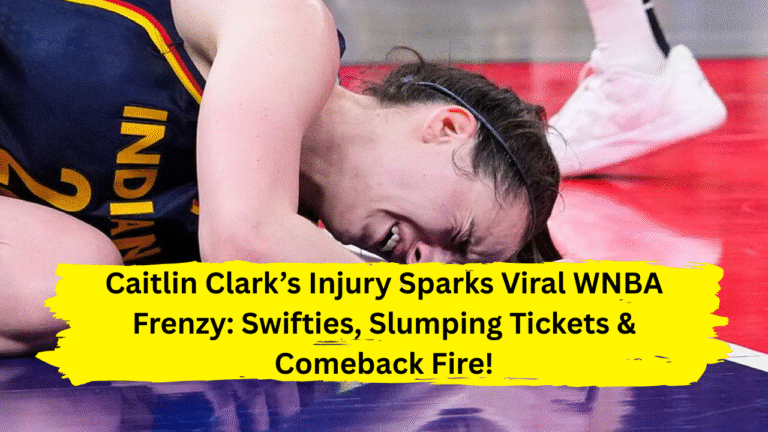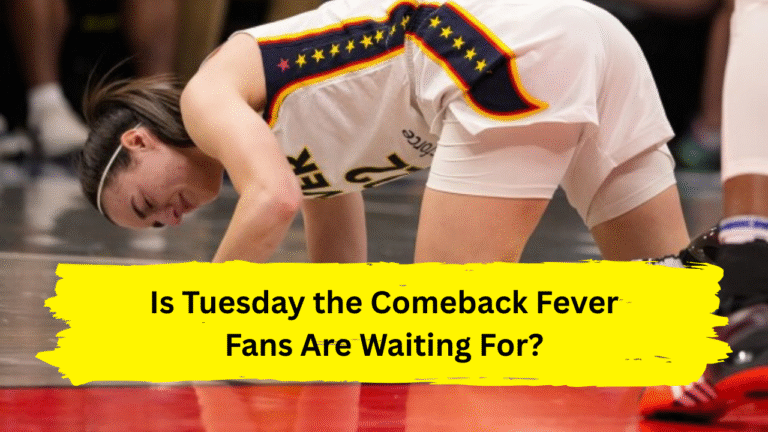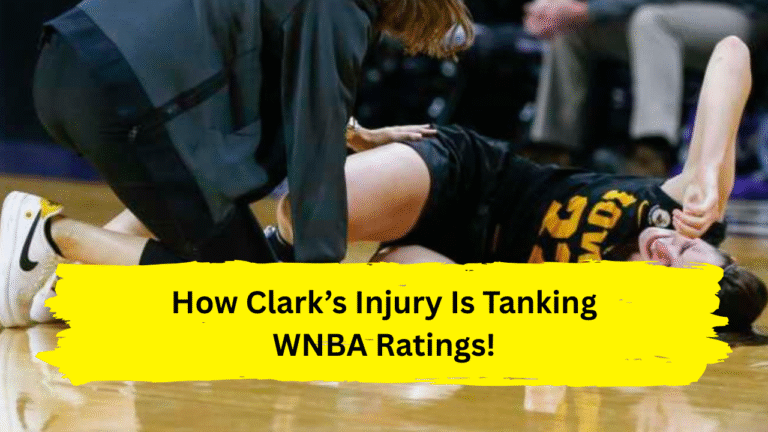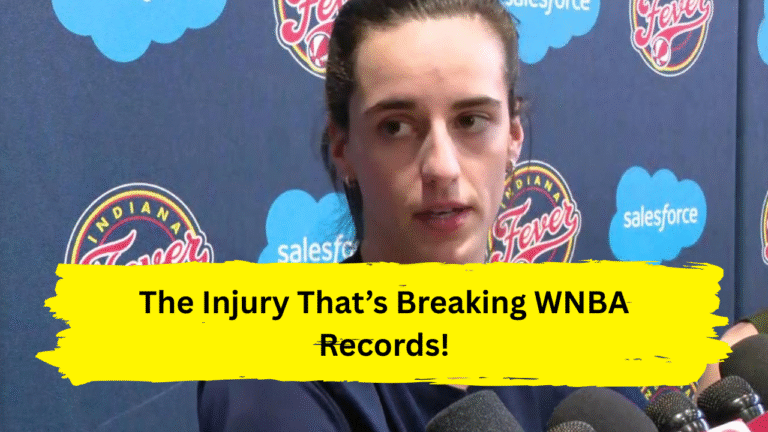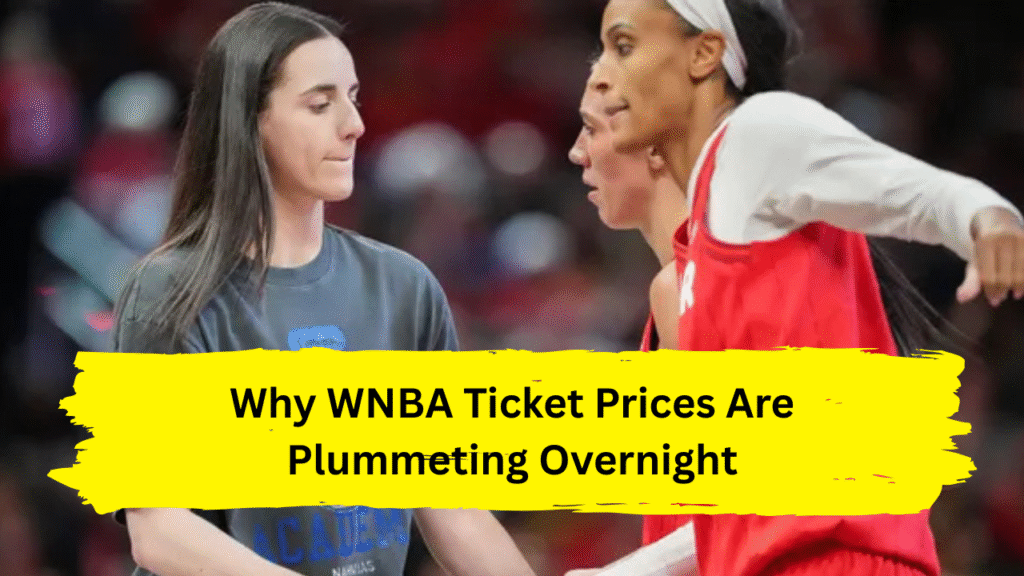
The moment Caitlin Clark clutched her left quad and limped off the court, the WNBA held its collective breath. Not just for her health—but for its booming box office. Because when the Indiana Fever superstar exited with a quad strain, something unprecedented happened: Ticket prices collapsed faster than a house of cards in a windstorm. Suddenly, $147 seats became $6 paperweights. Resellers panicked. Arenas braced for empty seats. And the sports world witnessed a brutal economics lesson: ticket prices plummeting aren’t just a side effect of Clark’s absence—they’re proof she’s become the league’s financial gravitational force.
The Injury That Shook the Sports Economy
It started subtly—a strain, not a tear. On May 27, the Indiana Fever announced Clark would miss at least two weeks with a left quad injury . For a player who’d never missed a college or pro game, it was a shock. But the bigger tremor rippled through ticket marketplaces. Within hours, get-in prices for Fever road games began nosediving:
- Washington Mystics (June 5): Prices cratered from $41 to $6—an 85% freefall .
- Chicago Sky (June 7): A 71% drop, from $86 to $25 .
- Baltimore Arena (June 5): Down 47%, from $41 to $22 .
Resale platforms like VividSeats and TickPick became horror shows for sellers. Andrew Brandt summed it up starkly: “Different world with CC vs. without CC” .
The Sky-Fever Rivalry: A $1.4 Million Proof Point
Nothing exposes Clark’s value like the tale of two tickets for Fever vs. Sky games. Consider these June 7 vs. July 27 matchups, both at Chicago’s United Center:
- June 7 (Clark out): Cheapest ticket = $14
- July 27 (Clark expected back): Cheapest ticket = $82
That’s a 83% price chasm—all hinging on one player’s presence. Multiply that by 23,500 seats, and Clark’s absence represents a $1.4 million loss in base revenue for just one game. Why such violence in the drop? Simple: Clark vs. Reese isn’t just a game—it’s a cultural moment. Their NCAA rivalry (dubbed “The Clash”) drew 12 million viewers in 2024. Without it, the urgency evaporates .
The “Clark Effect” vs. the “Clark Void”
For weeks, the “Caitlin Clark Effect” was the WNBA’s rocket fuel:
- Viewership: Her games averaged 1.184 million viewers vs. 428k for non-Clark games .
- Arena Upgrades: Teams moved games to NBA arenas (like DC’s 14,000-seat CFG Arena) to meet demand .
But her injury flipped the script. The “Clark Void” revealed an uncomfortable truth: the league’s 2025 surge relies disproportionately on one rookie. Commissioner Cathy Engelbert’s recent Harvard Business Review article, outlining “three pillars” of the WNBA’s growth, conspicuously avoided crediting Clark or Reese . Critics pounced. Satirist Ben Daniel called the omission “sad,” while fans cited ticket collapses as proof Clark is the pillar .
The Dominoes Beyond Tickets
The fallout isn’t confined to resale sites.
- TV Metrics: When Clark’s games vanish, ratings could follow. As FOX’s Michael Mulvihill noted, Clark games tripled last year’s averages .
- Merchandise: Fever jerseys top WNBA sales; a prolonged absence risks cooling demand.
- League Narrative: Engelbert champions long-term growth, but Clark’s injury exposes how fragile “momentum” can be without transcendent stars driving it .
Even the Fever’s June 10 game in Atlanta—15 days post-injury—still commands $147 tickets. Why? Hope. Hope Clark returns. Because hope sells .
The Silver Lining? A Reality Check
This isn’t just a crisis—it’s a masterclass in athlete valuation. Clark’s absence forces teams to confront hard questions:
- Are they over-reliant on one star?
- Can Reese, A’ja Wilson, or Sabrina Ionescu fill the void?
- Will casual fans stick around post-Clark?
The WNBA’s long-term health requires converting Clark’s spotlight into sustained interest. As one X user observed: “They are literally taking money out of their own pockets by not embracing her” . Translation: Leverage Clark’s fame to elevate all stars.
The Countdown to Comeback
Clark’s re-evaluation date looms like a holiday: June 10 . Fever games beyond that—like June 19 at Golden State or June 27 vs. Paige Bueckers’ Wings—still sport $100+ tickets . The market is betting on her return.
When she does step back on the court, expect a frenzy. Tickets will surge. Arenas will shake. And the league will exhale. But the lesson will linger: In today’s athlete-driven economy, one star isn’t just a player—they’re the entire ecosystem.
The Takeaway: Caitlin Clark’s injury ripped back the curtain on sports economics. Ticket prices plummeting by 83% overnight isn’t a blip—it’s the market screaming that stars drive value more than leagues, teams, or even rivalries. For the WNBA, Clark’s absence is a short-term shock but a long-term gift: proof that investing in (and marketing) transcendent talent isn’t optional. It’s existential.
Also Read: Latest Trending News

